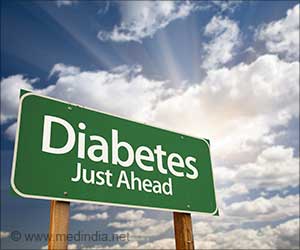The survival rates of white patients with multiple myeloma and diabetes were lower than those without diabetes but in black patients.

Diabetes May Accelerate Blood Cancer Growth, Yet Survival Outcomes Differ by Race
Go to source).
Survival Outcome in Diabetic Patients with Multiple Myeloma: Whites Vs Blacks
According to the Centers for Disease Control and Prevention, diabetes affects 13% of the U.S. population, and this prevalence is growing rapidly. Multiple myeloma is the second most common blood cancer in the U.S. and disproportionately affects non-Hispanic Black adults, in whom it is the most common blood cancer. While investigators have long been aware of the increased risk of multiple myeloma in patients with diabetes, this is the first study to examine racial disparities in survival rates among those living with these co-morbid conditions.‘Holistic care for diabetic patients with multiple myeloma may be possible with patient-specific treatment that considers racial disparities. #diabetic #bloodcancer #multiplemyeloma #racialdiffernce’





“We knew from prior studies that patients with multiple myeloma and diabetes have lower survival rates,” explained Urvi Shah, MD, a multiple myeloma specialist at Memorial Sloan Kettering Cancer Center. “But what we did not know is how these outcomes differ between races. Diabetes is much more common in Black individuals versus white individuals, and we wanted to understand whether this difference may play a role in health outcomes among patients with both conditions.”Researchers conducted a retrospective study, collecting data from electronic health care records of 5,383 patients with multiple myeloma from two academic medical centers: Memorial Sloan Kettering Cancer Center and Icahn School of Medicine at Mount Sinai. Fifteen percent of patients included had a diabetes diagnosis (12% of white and 25% of Black patients).
Evaluating the Overall Outcome of Diabetes with Blood Cancer in Mouse Model
Dr. Shah added that generally, one’s risk of developing diabetes increases with age. Study findings also show that overall survival decreases with age. Notably, however, in this cohort, diabetes was 50% more prevalent among Black patients 45-60 years old than white patients over 60 years old. Younger patients may tolerate multiple myeloma treatments better than older individuals, and these differences could explain some of the racial differences investigators observed in survival outcomes.When investigating the mechanisms behind these findings, Dr. Shah and colleagues observed that in genetically engineered mouse models, multiple myeloma tumors grew more rapidly in non-obese diabetic mice than in non-diabetic controls.
After studying the biological mechanisms underlying tumor growth in these mice, researchers found that an insulin-related signal was over-activated in the diabetic mice, leading them to believe that higher insulin levels associated with diabetes may accelerate cancer growth.
“In my own practice, I work with many patients with both multiple myeloma and diabetes. And usually treating multiple myeloma involves many rounds of chemotherapy,” said Dr. Shah. “But this study suggests that we may also improve patient outcomes further by treating diabetes at the same time.”
Advertisement
Reference:
- Diabetes May Accelerate Blood Cancer Growth, Yet Survival Outcomes Differ by Race - (https://www.mountsinai.org/about/newsroom/2023/diabetes-may-accelerate-blood-cancer-growth-yet-survival-outcomes-differ-by-race)















